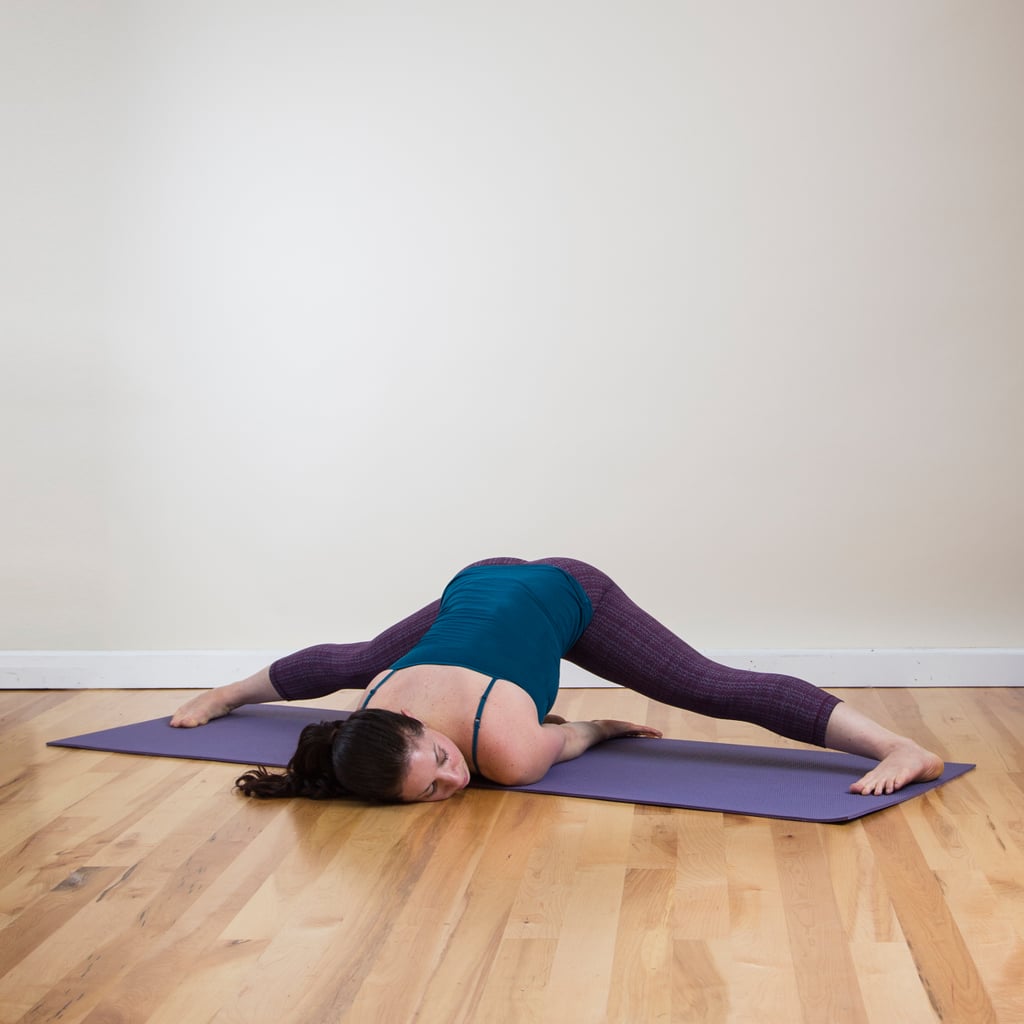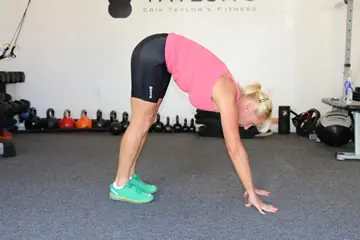

You might be such a faithful gym-goer that even the cleaning staff knows you by name; but no matter how many sets and reps you log, if your workout isn't giving you the results you want, poor form could be to blame. "Your body is engineered to move in precise ways," explains exercise physiologist Michele Olson, PhD, creator of the DVD Perfect Legs, Glutes and Abs. "The wrong alignment—or even the wrong exercise altogether—doesn't just stunt sculpting; it can also stress the body, leading to injuries that derail your progress."
Read on for 9 common workout blunders that Olson considers the sweaty equivalent of fingernails on a chalkboard—and how to fix 'em.

The mistake: Arching backward so your ribs pop up and jut out strains the back and puts you at risk for shoulder injury.
The fix: Keep your ribs down and knees slightly bent as you press the dumbbells up toward the ceiling.
More from Prevention: Toned Arms In 10 Minutes!

The mistake: Taking baby steps when you lunge causes too much sheer stress on the front knee, putting you at risk for tendon strains and, over time, arthritis.
The fix: Take a big enough step so that your front heel is about 2 feet in front of your back knee as it bends toward the floor. If, as you lower, you find you haven’t given yourself enough space, scoot the front foot forward.

The mistake: Thinking you can crunch your way to flat abs is flat-out wrong, says Olson, whose research has found that Pilates-style exercises that focus more on using the core muscles to stabilize are more effective at working the abs than spine-bending crunches. Plus, too much crunching can damage the back, she says.
The fix: There's no need to ban crunches altogether, but be sure to mix in core-stabilizing exercises like the Pilates hundred or yoga's boat pose. And when you do crunch, skip the gym class-style foot anchor, which allows your hips (rather than your abs) to take over and can pull your pelvis out of alignment, injuring your back.

The mistake: Bending over and letting your entire body weight dangle straight down while reaching for your toes in order to stretch your hamstrings (the back of your thighs) puts about 600 pounds of pressure on the spine for a 140-pound woman. That's because when your entire body weight hangs straight down in line with gravity, and the gravitational pull is zeroed in on the back, crushing the shock-absorbing discs in your spine. While you may move in and out of this position in yoga class, holding a stretch like this for 30 to 60 seconds leaves your spinal discs vulnerable to rupture, says Olson.
The fix: Sit down and take a load off while you reach for your toes. The exact same stretch done from a seated position is much safer.

The mistake: Flapping your arms too high as you lift your dumbbells to the side "causes your upper arm bone to bang into the cartilage-filled space in the shoulder," says Olson. Translation: Ouch!
The fix: Here's your chance to cheat without penalty: Lifting just to the bust line is as effective as lifting all the way to shoulder level.

The mistake: Sticking your chin out can be a pain in the neck (and upper shoulders) in any exercise, but looking up while doing bent-over dumbbell rows can strain your neck.
The fix: Focus your eyes on a spot about a yard in front of your toes to keep your chin down while doing bent-over dumbbell rows.

The mistake: Inching your hips skyward as you hold a plank position is quite simply cheating the exercise. The result: less-effective ab toning from this uber-effective move.
The fix: Focus on keeping your body in a straight line from your head to your hips to your heels (grabbing a friend to serve as drill sergeant can help keep you honest). Keep in mind that it's better to hold perfect form for 20 seconds than it is to do a full minute with incorrect form.

The mistake: Positioning your hands wider than your shoulders when you do push-ups puts strain on the front of the shoulders.
The fix: Get into push-up position with your wrists directly below your shoulders for a move that tones both your triceps and your chest without shoulder strain. (Check out this video on the proper way to do a push-up.)

The mistake: Whether or not you were a hurdler in high school, getting into a stretch position like one on the floor with your knee bent inward and the sole of your foot turned outward compresses the knee, leaving it vulnerable to injury.
The fix: For a safer stretch that compresses the knee less, rotate your bent knee outward instead so your sole presses into the inner thigh of the extended leg like a number 4. Then reach for your toes to feel the stretch.
More from Prevention: Get Long, Lean Muscles With This Yoga Workout
Original article and pictures take www.prevention.com site














/GettyImages-476804187-56a2b7e45f9b58b7d0cdb52a.jpg)
/standinghamstring-56a2b7d75f9b58b7d0cdb4d4.jpg)
/stretchchest-56a2b7d75f9b58b7d0cdb4d8.jpg)
/upperbackstretch-56a2b7d75f9b58b7d0cdb4db.jpg)

